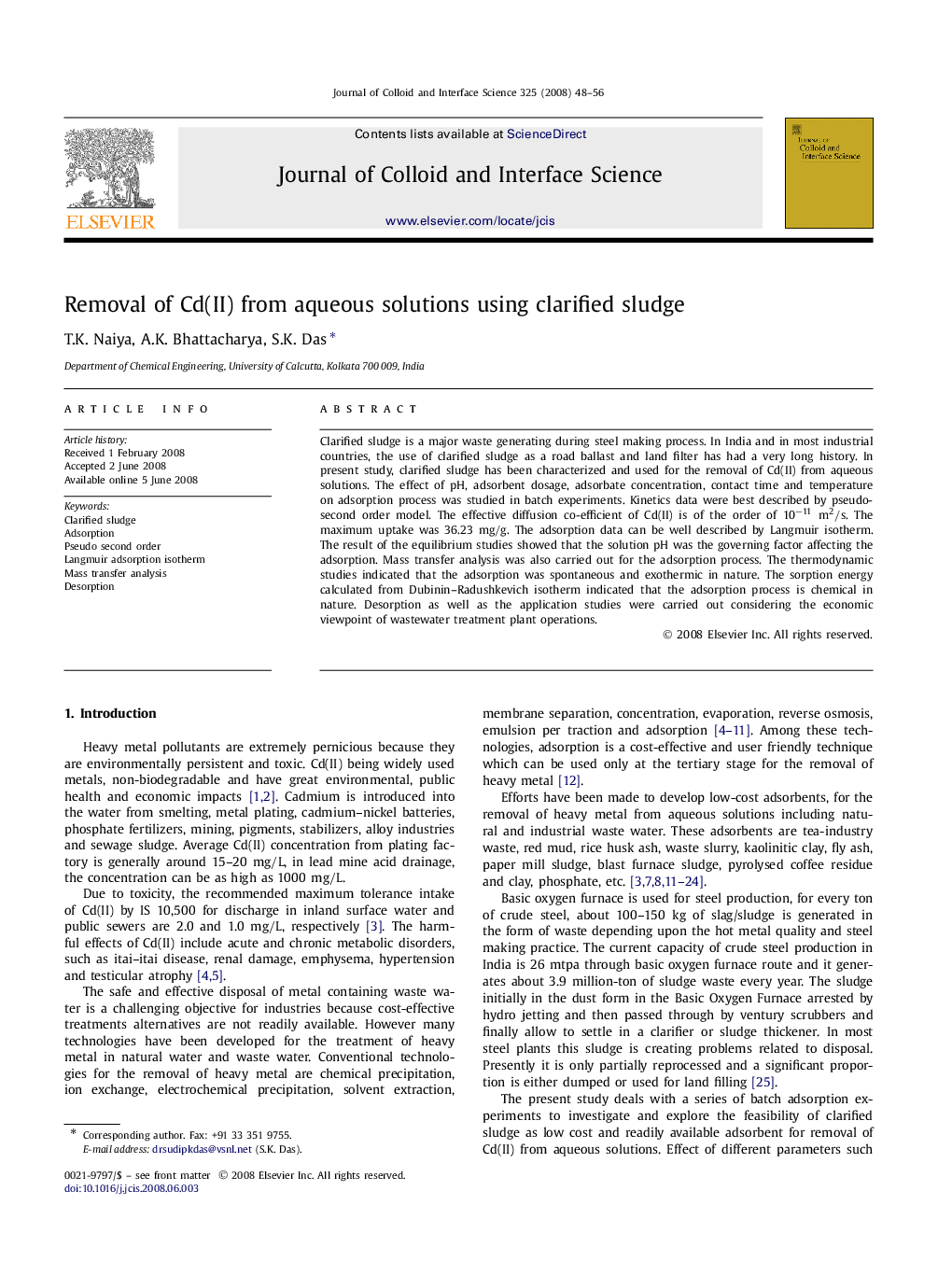| Article ID | Journal | Published Year | Pages | File Type |
|---|---|---|---|---|
| 611041 | Journal of Colloid and Interface Science | 2008 | 9 Pages |
Clarified sludge is a major waste generating during steel making process. In India and in most industrial countries, the use of clarified sludge as a road ballast and land filter has had a very long history. In present study, clarified sludge has been characterized and used for the removal of Cd(II) from aqueous solutions. The effect of pH, adsorbent dosage, adsorbate concentration, contact time and temperature on adsorption process was studied in batch experiments. Kinetics data were best described by pseudo-second order model. The effective diffusion co-efficient of Cd(II) is of the order of 10−11 m2/s. The maximum uptake was 36.23 mg/g. The adsorption data can be well described by Langmuir isotherm. The result of the equilibrium studies showed that the solution pH was the governing factor affecting the adsorption. Mass transfer analysis was also carried out for the adsorption process. The thermodynamic studies indicated that the adsorption was spontaneous and exothermic in nature. The sorption energy calculated from Dubinin–Radushkevich isotherm indicated that the adsorption process is chemical in nature. Desorption as well as the application studies were carried out considering the economic viewpoint of wastewater treatment plant operations.
Graphical abstractThe experimental runs measuring the effect of pH on the batch adsorption of metal solution containing 10 mg/L of Cd(II) at 30 °C.Figure optionsDownload full-size imageDownload as PowerPoint slide
